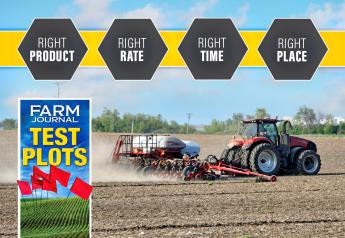Industry Experts React To Dicamba Registration Renewal
Wednesday the Environmental Protection Agency (EPA) announced it would renew the label for over-the-top use of dicamba in soybeans and cotton through 2020. With this announcement, the agency detailed additional restrictions and label changes for the products now on the market: Engenia, FeXapan and Xtendimax.
“This represents the conclusion of a very thorough scientific review, in conjunction with stakeholders, involving site visits and careful consideration of facts,” said U.S. Secretary of Agriculture Sonny Perdue in a recent statement. “Producers who use this weed control method should review the label, understand why changes have been made, and ensure that all requirements of the label are met when the 2019 use season begins.”
EPA added certain restrictions to products with the renewal, including: applicators must be certified; spray restrictions of 45 days after planting in soybeans or R1 and 60 days after planting in cotton; buffers for endangered species; and limited application hours, to name a few. View the restrictions in more detail here.
“We will comply with all label requirements. Our focus is stewardship education to help our customers follow all label requirements,” explained officials with Corteva Agriscience, agriculture division of DowDupont, in a statement provided to AgWeb. “As a restricted use pesticide, training will be required for applicators. We expect more guidance from the agency in the very near future on required trainings for next season.”
Not everyone in the industry is 100% satisfied with the changes.
“As I’ve said before, the EPA is in a very difficult position in regulating this technology—whatever they do is going to be criticized by some people,” said Bob Hartzler, Iowa State University Extension weed scientist in a recent blog post. “Unfortunately, I don’t think these new restrictions will have a significant impact on the problems we’ve seen the past two years.”
Experts haven’t seen the full labels yet either, which brings up more questions.
“It’s less restrictive than what we had in the state of Missouri, but I’m learning as everything is coming to light,” says Kevin Bradley, University of Missouri Extension weed scientist. “But I need to see a label to answer some of these questions. My initial reaction is it’s less restrictive compared to what Missouri Department of Agriculture did in 2018.”
Bradley says he wants to see more clarity about the buffer for endangered species—whether that just includes plants or if animals need to be considered, too—and what the language will be on pH.
In 2017, there were an estimated 3.5 million soybean acres of dicamba damage. For 2018, the total number hasn’t been confirmed. The most recent tally in 2018 July by Bradley indicated there were 1.1 million acres of damage but didn’t include reporting from several of the major soybean-growing states. Manufacturers say the total number of complaints they received is down from last year.
“We’re excited to have a label in hand. This decision will enable our growers to have access to the technologies that they need and want, as seen by the rapid adoption of the Roundup Ready Xtend Crop System,” says Ryan Rubischko, Bayer dicamba portfolio lead. “The changes to the label provide even more clarity to enable farmers to have even greater results with XtendiMax.”
Each of the manufacturing companies was required to provide information to the EPA so it could decide whether to renew the label registration. BASF provided the following statement to AgWeb:
“Potential risks to human health and the environment are thoroughly investigated and minimized throughout the research and development process of a pesticide. Over the 10+ years it takes to bring a crop protection product to market, 200 to 300 scientific studies are conducted to ensure that products meet the highest safety standards. On average, about 800 requirements must be addressed to receive registration.”
Syngenta announced it will also be offering a dicamba product called Tavium plus VaporGrip Technology. Pending regulatory approvals, it could launch as early as the 2019 season. It’s a premix that features dicamba, s-metolachlor and VaporGrip. Any label requirements stated by the EPA will be followed in this new product, too.
“There is still much to be determined about these new labels and requirements in 2019,” according to the Illinois Fertilizer and Chemical Association. “Everyone is waiting to see the actual product labels before we go much further. But in the interest of time, you need to know that your operators need to take the field crop exam sometime this winter if you want them to apply dicamba to soybeans.”
If they choose, states can decide to impose a more restrictive label on dicamba use. The EPA-approved label would need to be reviewed by the 34 individual states where the chemistry is approved for use.
“I think we’re all just waiting and trying to learn,” Bradley says. “My phone is ringing off the hook from farmers and retailers, and I’m glad to see EPA put something out finally but we still have to hear from the Missouri Dept of Ag.”
Stay tuned for more updates on AgWeb.com for state-level requirements.







